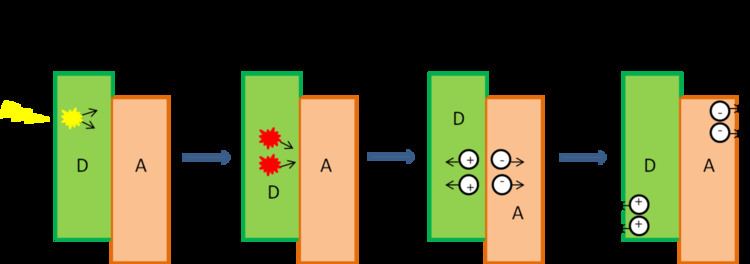 | ||
In the area of spectroscopy, singlet fission is a spin-allowed process whereby a singlet excited state converts to two triplet states. The phenomenon is observed in molecular crystals, aggregates, disordered thin films, and covalently-linked dimers, where the chromophores are oriented such that the electronic coupling between singlet and the double triplet states is large. The process often occurs on a picosecond or femtosecond timescales, thereby out-competing fluorescence. The process is distinct from intersystem crossing, in that singlet fission does not involve a spin flip, but results in two triplets coupled into an overall singlet. It has been proposed that singlet fission in organic photovoltaic devices could improve the photoconversion efficiencies.
History
The process of singlet fission was first introduced to describe the photophysics of anthracene in 1965. Early studies on the effect of the magnetic field on the fluorescence of crystalline tetracene solidified understanding of singlet fission in polyacenes.
Acenes, Pentacene and Tetracene in particular, are a prominent candidates for singlet fission. The energy of the triplet states are smaller than or equal to half of the singlet (S1) state energy, thus satisfying the requirement of S1 ≥ 2T1. Singlet fission in functionalized pentacene compounds has been observed experimentally. Intramolecular singlet fission in covalently linked pentacene and tetracene dimers has also been reported.
The detailed mechanism of the process is unknown. Particularly, the role of charge transfer states in the singlet fission process is still debated.
